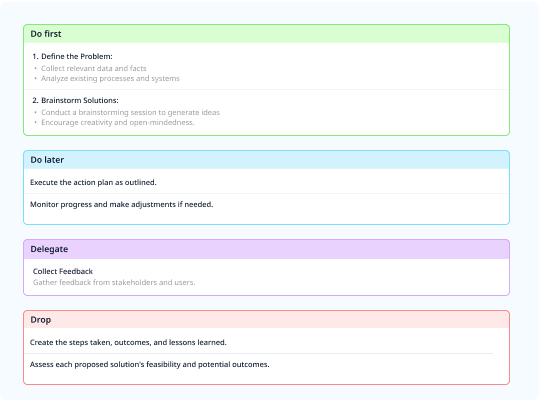creative tool

The Urgency-Importance Matrix (UIM) is an effective tool for managing task priorities and promoting creative thinking. In our work and life, we often have to juggle multiple projects and additional tasks that may not be directly related to the main project. The UIM tool helps bring order and prioritize all the tasks and actions that need to be completed.
The UIM tool is based on Eisenhower’s decision matrix. It requires defining the levels of urgency (urgent or not urgent) and importance (important or not important) for each task. The key question is how to determine urgency and importance. The PRIZ approach suggests using the following criteria: tasks arise from flaws, urgency is related to expectations (anticipated actions cannot be urgent), and importance is linked to the cost of a flaw (high-cost flaws are important).
Here are some examples of situations where you and your team can benefit from using the UIM tool:
The Urgency Important Matrix (UIM) is a managerial creative thinking tool that is useful in situations where tasks are changed due to variations in processes, supply chain, sales, troubleshooting, etc. It is an instrument that can be used day-to-day and is applicable in various cases. Some highlighted situations where UIM can be beneficial include:
Furthermore, you can explore and identify many other situations where UIM thinking can be valuable.